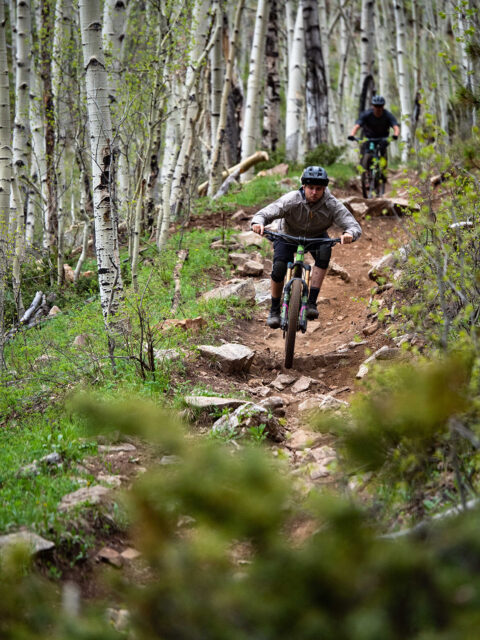
Intro
We field a ton of questions from Blister Members asking what would be the best gear for them, but sometimes the questions we get are applicable to a wider audience, too. So in our new Blister Q&A series, we’re opening the floor for your questions. We’re kicking it off this week with some questions about suspension setup, value MTB parts, and the future of bike geometry.
If you’ve got a question you’d like to see covered in a future article, drop us a line and we’ll answer a selection of the best ones in future articles. And, of course, if you want a personalized gear recommendation — and a guaranteed response — become a Blister Member and drop us a line through the contact form in the Blister Member’s Clubhouse.
Now, onto this week’s questions:
Dan: Could you talk about the tradeoffs between using high speed compression damping and air pressure to adjust suspension feel? What symptoms lead you to, say, increase high speed compression damping vs air pressure? I have been riding for a long time and this still confuses me, the desired outcomes seem to overlap a lot.
A: Good question. In basic terms, the spring in your suspension is what actually holds your weight up, and the damper is there to control the motion of the suspension. Or, put differently, the spring is position sensitive (i.e., its force is determined by how far the suspension is compressed) and the damper is speed sensitive (i.e., its force is determined by how fast the suspension is compressing or rebounding).
[For the pedants out there: yes, most dampers are also slightly position sensitive due to some minor spring effect from whatever mechanism they use (IFP, bladder, etc.) to deal with oil displacement compensation, but its effect is relatively small compared to everything else that’s going on in your suspension. Let’s set that aside for now.]
Picture, for example, riding along on a smooth surface and hitting the brakes. Your weight is going to transfer forward on the bike, causing the fork to compress. But, crucially, that transfer (1) happens very slowly (relatively speaking anyway; it generates way, way lower shaft speeds than, say, hitting a square-edged bump) and (2) it’s mostly a brief change in the equilibrium of your body position and the suspension sag, and as long as you stay braking evenly, the suspension doesn’t keep moving. The spring is doing much more of the work here, and is the more effective thing to change if you want to change the amount of support you’re getting when the suspension isn’t moving very fast. If we’re talking about air-sprung suspension and you’re looking for more support but already aren’t bottoming out a whole bunch, going to slightly higher air pressure and removing a volume spacer can be a good way to go. As someone who tends to favor really supportive fork setups, I usually find myself running significantly more air pressure and fewer volume spacers than manufacturers recommend as a baseline, particularly in my forks.
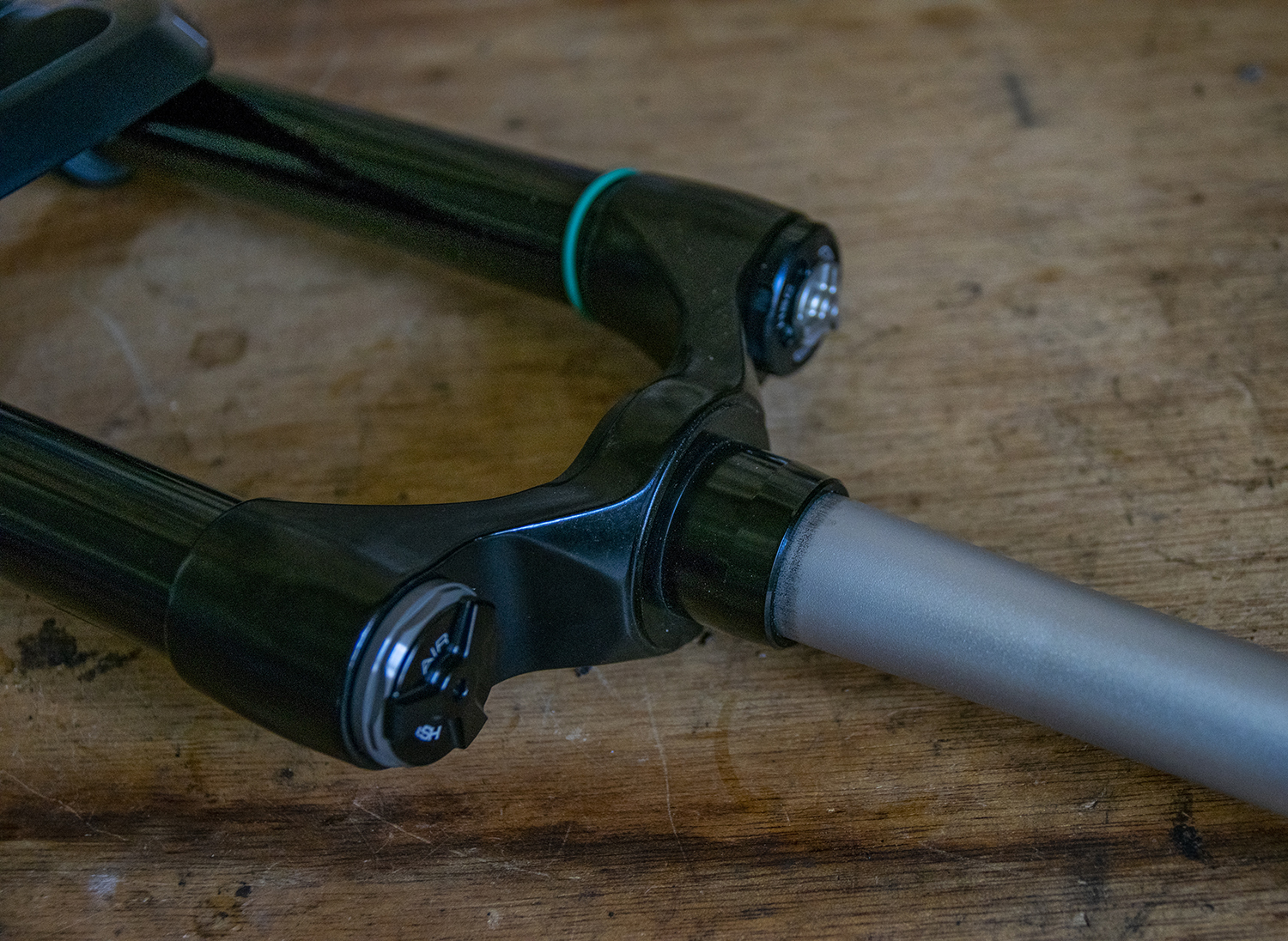
Things change a lot once you hit a bump, though. That bump will generate higher shaft speeds, and more high-speed compression damping will definitely make the fork feel firmer and more supportive while the fork is compressing through an impact. That can mean that the fork will use a bit less travel on the same impact than it would with less high-speed compression damping. But in general, if you’re finding yourself bottoming out too often or not using anything close to full travel, you’ll want to adjust your spring settings to get a more effective change. If, however, you’re in the right ballpark in terms of how often you use most or all of the travel, but find yourself wanting to make things firmer or softer specifically when you’re hammering the bike through a series of bumps, adjusting high-speed compression damping will make a very real difference.
Another good way to think about the difference between spring and compression damping settings is what the two do with the energy that they absorb. A spring returns that energy on rebound, whereas compression damping dissipates it as heat. The result here is that adding spring rate tends to make the bike feel more lively and poppy, whereas adding compression damping will generally make the bike feel more planted and dead. Assuming you’re not wildly off base with your other settings, this can be a really useful framing for making relatively small adjustments to your setup — e.g., do you want to make things firmer and more lively, or firmer and more planted?
It’s also worth pointing out that the low- and high-speed compression adjusters on your suspension aren’t truly independent. A full explanation of the finer points here could be a whole separate article unto itself, but in short, there are a few main points to bear in mind:
(1) Any time you’re hitting a bump that gets you into high shaft speeds, you still have to pass through the low-speed region to get there. Your suspension doesn’t instantaneously accelerate from not moving to moving very fast, and before it gets up to speed, you’re in the low-speed compression adjuster’s realm.
(2) Adding low-speed compression damping is effectively going to also add high-speed compression. Think of it this way: your low-speed compression adjuster effectively determines how quickly the shock can compress before the low-speed circuit can’t handle any more flow and the high-speed one has to take over. If you make the high-speed circuit take over sooner, at a given shaft speed above that threshold, the high speed circuit is going to be handling more oil flow and therefore providing more damping than it would with the same high-speed compression setting but a lighter low-speed one.
(3) Conversely, if you’re running very light high-speed compression damping, the high-speed circuit is going to take over at very low shaft speeds, and your low-speed compression adjuster isn’t going to do as much as it would with firmer high-speed compression. Most decent modern forks and shocks aren’t going to let you back the high-speed damping off so completely as to eliminate the efficacy of the low-speed adjuster entirely, but this effect holds true in general. If you’re struggling to get the low-speed compression that you want and you have the high-speed set very light, adding a little high-speed could actually get you there.
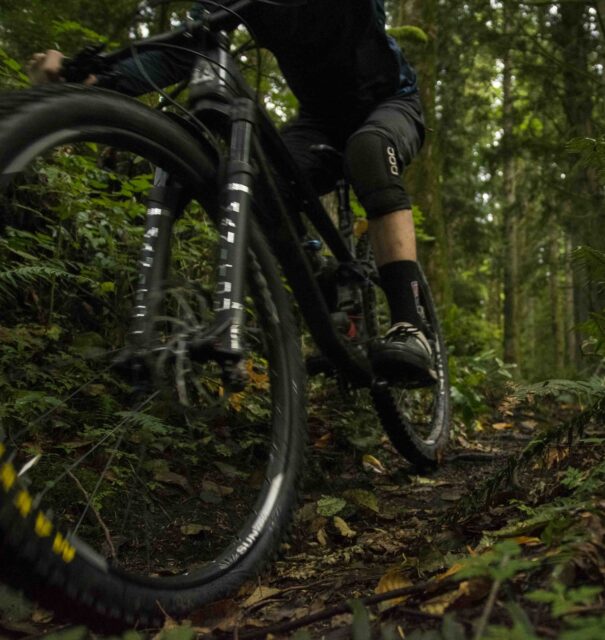
Brendan: First, what would you say are some of the other best-bang-for-the-buck bike products? The past year has talked about Shimano Deore (which I had Drivetrain and Brakes on a bike and thought it was great), but what about suspension and, say, wheel sets? Even if it’s not exact items, what do you think is the best price point to be around? Basically, what’s the point where you start hitting your diminishing returns in bangs to bucks for other items?
A: Well, first off, you’ve already hit on my first and most obvious answer for an outstanding budget product — the Shimano Deore 12-speed drivetrain. We’ve already talked about it a ton on Blister, but I think for good reason. A few of the parts (notably the cassette) are admittedly heavy, but you can mix and match in a few higher-end options if you really care about the weight. And in terms of overall performance, it’s really remarkably good, given what it costs. But you asked for some other ideas so….
Suspension is a tricky one. To a large extent, it does tend to be a case where the higher-end options do perform better. Whether they’re worth the price premium is a more subjective question that’s going to depend a whole lot on your own needs and preferences. With a few exceptions, there also aren’t massive variations in price between the main competitors in the mid-tier to high-end space, making it hard to call out real value winners. But that said, a few products that come to mind are:
Manitou Mezzer Pro: Admittedly, the suggested retail price just went up slightly to $1,049, and that’s not cheap. But for one thing, they’re readily available online for at least $100 less than that, and for another it’s a truly top-tier fork from a performance standpoint, for just a bit less than most of the other really high-end options. Manitou also offers a less-expensive Mezzer Expert for $800, but we haven’t been able to get on one yet, so we can’t say how it stacks up.
RockShox Super Deluxe Ultimate: This is another case where you get a very good, high-end shock for less than most other top-tier options. You don’t get as many bells and whistles as some other shocks (e.g., there’s only a low-speed compression adjuster) but it works really well and there’s a ton of aftermarket support available if you do want to go down the road of custom tuning.
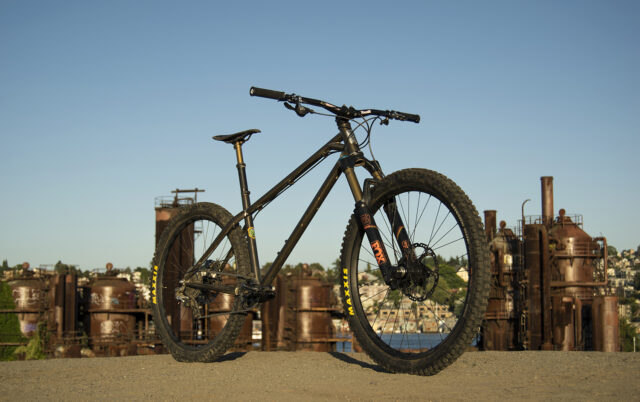
Upgrading What You Already Have: This obviously isn’t a specific product, but if you’re looking to upgrade the suspension on the bike you already have, there are a lot of ways you can make improvements without having to buy a whole new fork and/or shock. For one, just a simple service can go a long way if what you’ve currently got is tired and in need of a refresh. And depending on what specific product we’re talking about and what you’re hoping to get out of it, some custom tuning work while you’re in there might well be a good way to go. Particularly for the big players (e.g., Fox and RockShox) that offer a variety levels within a given fork line, the biggest differences tend to be in the damper, and in a lot of cases you can either swap in the higher-end damper from the fancier models, and/or get a custom tuner to make the more basic / less adjustable model work better for you.
[It’s also important to not conflate the number of adjusters with performance. For example, the RockShox Lyrik Ultimate is the top-tier model with independently adjustable low- and high-speed compression. The Lyrik Select+ comes with exactly the same damper, except that the high-speed compression is factory set to the middle of the range of the Ultimate, and doesn’t have an adjuster. It still works extremely well. And then there’s the Lyrik Select, which also features adjustable low-speed compression, but with an entirely different damper architecture that costs less, but offers significantly less impressive performance. And for Fox, their Performance Elite options are essentially the same as the top-shelf Factory versions, just without the gold Kashima coating, which we don’t think makes a huge difference.]
Wheels are also tricky. There are definitely differences in weight and ride quality between different options that I don’t mean to downplay, but durability is a big piece of the puzzle, too. And in particular, good quality hubs can last a really, really long time with a little maintenance so if you’re playing the long game, starting with good hubs and replacing the rims they’re laced to as needed can be a good move long-term. This is especially true if you’re able to build the wheels yourself, which is both my personal favorite bike repair task, and way more doable for a semi-competent home mechanic than a lot of people tend to think.
And my two best recommendations for super durable hubs that don’t cost an insane amount of money are DT 350s and Hope Pro 4s. Neither has the absolute most points of engagement (which, as I’ve written about a bunch of times, I really don’t think most people need) and the DTs don’t come in fancy anodized colors. The main downside of the Hopes is that their freehub is pretty damn loud, if you care about such things. But they both work really well, hold up great, and cost a whole lot less than the full-bling options out there. You can definitely get cheaper options, but they tend to not be as durable, and often don’t have the same kind of spare parts support that you get from the top brands either. DT and Hope both offer all the little replacements you need to keep their hubs running, making them a solid investment for a wheelset that you want to keep.
On the rim side of things, if we’re talking budget options, aluminum is going to be the way to go for most people. Carbon wheels are great, but they’re not the place that we’d recommend most people first spend money (unless you’re blowing up aluminum wheels all the time — good modern carbon rims are often stronger, and many come with a lifetime warranty to boot). And once again, DT gets a nod here — their higher-end aluminum rims are easily the nicest I’ve used. I’ve got the most time on the EX511 and EX471, but have ridden the XM481 a bit and had great results across the board. They’ve got a few more options at different widths and strength levels, too. Admittedly, these are on the more expensive side for aluminum rims, but they’re also really notably good for durability-to-weight ratio, ride well, and easily set up tubeless. Lace a set of those to one of the hubs mentioned above, and you’ll have a really good, durable wheelset that you can easily replace parts on as needed for not much more money than most mid-range factory-built wheels.
And for a couple other random shoutouts, the OneUp Dropper Post V2, Deity Deftrap Pedals, and Specialized Butcher T9 are a few other products we’ve recently tried that work really well while costing less than many of their competitors.
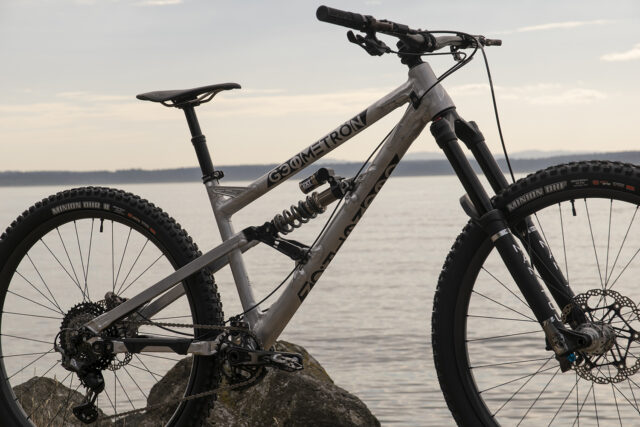
Brendan: The other question I have is about geo. Do you think we’ll start seeing bike geometry regressing in the next few years? Slightly steeper head angles, but maybe not lower seat angles or reaches? The ski industry did this like 10 years ago with rocker, where we ended up with All-mountain skis that were fully rockered out, but then we went back to some combination of rocker and camber (with few exceptions). Is modern geo truly better for every single situation?
A: I don’t think we’re going to see a significant regression for a few reasons. First is simply the fact that the bike industry has been inching towards what we’d call “modern” geometry for quite a while now. It’s not like bikes made a dramatic leap from where they were 10–15 years ago to where we’re at today. Rather, it’s been a steady march of incremental changes with each update cycle. The result of that is that it took us a while to get here, but it also gave consumers time to get used to the new longer / lower / slacker paradigm, and helped keep companies from overshooting their mark, so to speak, because they weren’t making massive changes all at once.
The other big reason is that “modern geometry” isn’t a monolithic set of numbers. Bikes have gotten longer and lower and slacker in general, but it’s not like we’re seeing every new bike that comes out — even within a given category — having identical numbers, either. There’s no such thing as a free lunch, and any geometry change you can think to make would have its tradeoffs, but I do think it’s fair to say that, overall, more modern geometry is better for most people, doing most kinds of riding, than where we were at 10 years ago. And while there’s definitely room for variation depending on personal preference and the type of riding you’re doing, the industry still does cater to that — it’s not like every bike is a Geometron now.
It’s also the case that people just have more flexibility to size up or down on bikes than ever before, to get their desired feel. It’s not uncommon for us to publish a First Look of a bike and hear someone say something like “it’s too long, I ride larges but I just can’t get along with a 490 mm reach.” And our response to that person would simply be: “size down.” There’s no reason you need to stick to the same nominal size that you’re used to riding. (And that’s a big part of why many companies are ditching the classic S/M/L scheme in favor of numerical sizes — it’s a deliberate effort to get people to think about their fit more in terms of their actual needs than just going with what they’ve become used to.)
And so that’s why I don’t think we’re going to see a backslide on geometry. The Nicolai G1s and Transition Spires will still be there for people who want the most aggressive geometry than can get. So will the Devinci Spartan HPs and Rocky Mountain Altitudes, for the folks who’d like something a little more moderate. I do think it’s the case that we won’t see geometry continue to get longer / lower / slacker in the same way that we have been in the last decade, and I also think that’s a lot of why we’re having newfound interest in things like mullet wheel setups and high-pivot bikes — geometry is setting down, and companies are looking for the next things to experiment with and dial in. Will those trends stick? I’m honestly less sure, but the geometry that we’ve gotten used to is here to stay.
That’s a wrap for this session of Blister Q&A, and we’d like to thank Dan and Brendan for the questions. If you’d like to have your question answered in a future iteration, drop us a line here and we’ll answer a selection of the best ones in future articles. And, of course, if you want a personalized gear recommendation — and a guaranteed response — become a Blister Member and drop us a line through the contact form in the Blister Member’s Clubhouse.


You are probably right about geometry trends. Unfortunately I do not agree with you that current geomtry serves the riders that well.
-Short riders now truly struggle to get a bike with a small enough cockpit. If you already riding the smallest size from a brand, sizing down is not an option.
-The next one is head angle.
I do wish that (some) bikes around 125mm of travel range would get a bit steeper headangles again. Sure, “downcountry bikes” can be a ton of fun, and they are probably the best tool for high speed, wide, machine built flow and jump trails.
However, many parts of the world have rolling or tight trails, where you want to have fun at lower speeds, and agility of the bike matters, both for fun and for speed. A 67 degree head angle was never a problem for us before. Remember, a big benefit of slack headangles is that you don’t end up with negative trail when hitting a something while descending steeply. Shorter travel bikes don’t dive as much as longer travel ones, so they don’t need as head angle ‘in reserve’ so to speak. Especially now that we have shorter fork offsets, to help maintain sufficient trail better irrespectively of head angle.
The drawbacks of the current super slack head angles for tighter, lower speed trails are two fold:
First off they (obviously) make the handling heavier and harder to control on low speed corners and climbs
Second, they lengthen the bikes. For (very) small riders this just means bikes are harder to muscle around , while for very tall riders, you need to lengthen the chainstays to maintain good front tire weighting (for flat corners), so then you end up with a bike that is super long in overal wheelbase, making a tight fit on tighter trails.
In short, I think ‘downcountry’ bikes have their place, but the market for shorter travel bikes with a bit more modest geo (let’s say 66-67 degree HA, coupled with a short offset fork), is even bigger, yet those bikes have become super rare.
I’m definitely with you that those bikes have their place, but I’m not sure I’d agree that they’re “super rare”. There are a whole lot of bikes like the Transition Spur, Ibis Ripley, Specialized Epic Evo, Cannondale Scalpel SE, etc. in the ~120mm travel, “aggressive XC” sort of class that fit the criteria you’re talking about, and a bunch of options like the Rocky Mountain Instinct, Devinci Django, Trek Fuel EX, etc. that also fit the bill if you want something a bit burlier and/or with a little more suspension.
I love the ‘aggressive XC’ category, but those are on the shorter travel side. 110mm, maybe 120 for a few of them. I was talking about the 120-140 mm travel category. A bit of extra suspension for adding comfort and control on the rougher trails, while still staying light and lively.
The Trek Fuel EX does perfectly fit that category, as do some others you mention.
I guess my perception was colored by the bikes in the stores here in town, as well as reviews that have been coming out recently. Thanks for the correction!
Regarding drive trains I just wanted to mention that the German BIKE Magazin has recently published a lab test according to which from the Shimano group sets XT lastet the longes and X01/X11 from SRAM, therefore have the best best bang for your buch respectively per mile.
Also, the Beyond the Tape Podcast (Tech Episode 3) mentioned how important it is to use a top of the line chain, for example even if you are riding NX, you should use a XX1 chain. You will have better shifiting performance and the whole drive train will last longer.